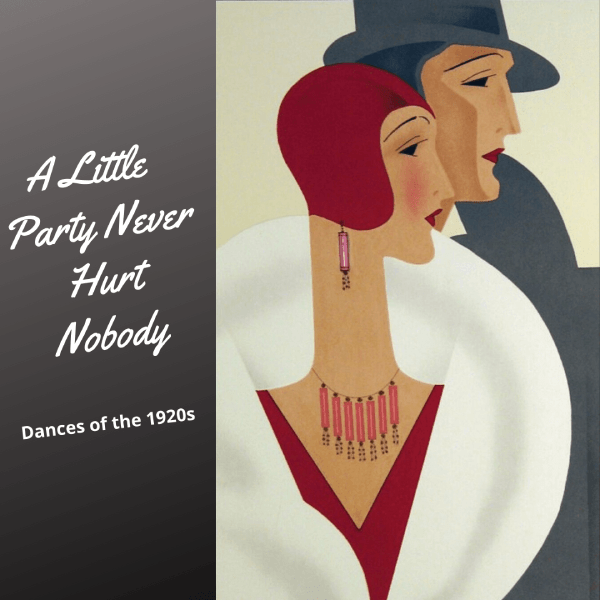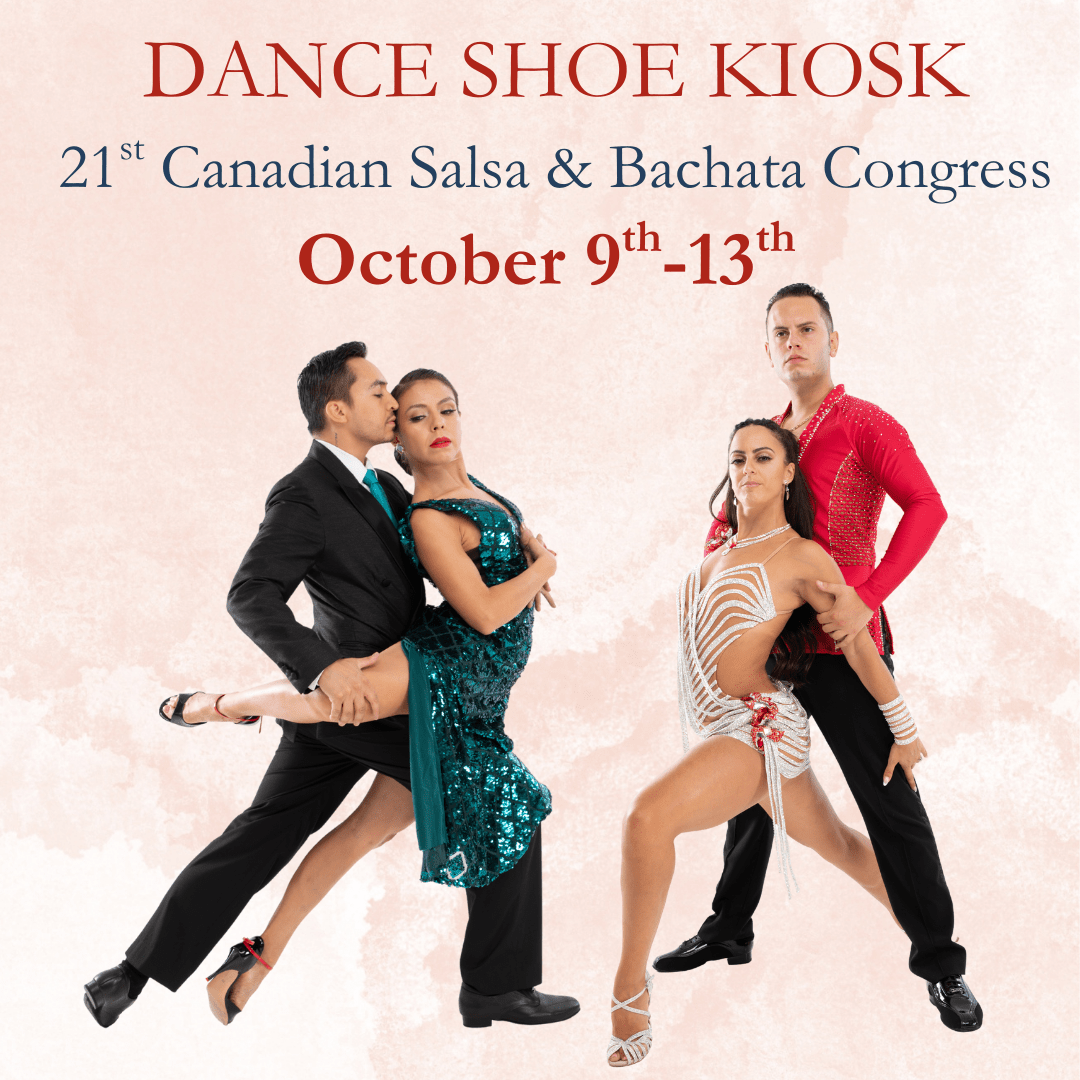In a few short weeks, we will once again be in the '20s (I must admit to being disappointed by the lack of sequins and fringe in fashion so far because I AM HERE FOR IT. COME ON PEOPLE.).
That being said, what better time than now to revisit some of the dances made famous during the age?
***
1920. The beginning of what would come to be known as the Roaring Twenties and the Jazz Age. World War I (“The Great War” or “the war to end all wars”) had ended and the world was giddy. The North American and Western European economies boomed and everywhere -- in culture, art, music -- people were reinventing themselves, breaking with tradition to forge new futures (1). Women’s fashion lost the corset, dresses became shorter and glitzier, and music and dance soared.
There were many dances that emerged in ballrooms in the 1920s, but I’ve chosen three to look at more closely: Foxtrot, Peabody, and Charleston. Swing dancing also emerged during this era and you can read about it HERE.
FOXTROT
I can already see some of you rolling your eyes and hitting the “scroll” button. STOP. DON’T SKIP THIS. FOXTROT IS AMAZING.
Seriously. If you’re just beginning then no, you might not get it. The Bronze I & II syllabus really doesn’t hint at the pure joy and sass of this dance (although you get a glimpse of it with the grapevine), but I promise you if you stick it out you will get there. Foxtrot is like the jazz music you dance it to: free and easy and sauntering. It’s a dance that loves life and knows life loves it (trust me on this, ok?). It can easily break into a Triple Swing (done it!) and back again.
Technically the Foxtrot was not born in the 1920s. It’s one of the few actual American dances and originated in 1914, credited to Arthur Carringford whose stage name was Harry Fox. There are two stories floating around when he first debuted his dance. The first is that he and his wife, Yansci Dolly of the Dolly Sisters, were seen dancing a dance “that put everyone in a good mood”. The audience name the dance “the Foxtrot”.
The other story is similar. When the New York Theatre was converted into a “Jardin de danse”, Harry Fox and his company (“American Beauties”) performed a dance act between shows. And their dance featured “trotting steps to ragtime music”. It then became referred to as Fox’s Trot or The Foxtrot (2).
Regardless of which story is true, by September of the same year dance instructors were already at work standardizing the steps for the syllabus (3).
What does all this have to do with the 1920s? Well, the Great War broke out and put and the dance never had a chance to catch on. After the war when people were trying to break loose from the old traditions, they broke from the dances that were pre-war and thus out-of-fashion. But as the Foxtrot had never caught on before the war, it came into fashion...and became the favourite dance of the 1920s (4).
The Foxtrot today has several forms. In American Smooth, it’s simply “Foxtrot” and while the early Bronze levels put an emphasis on closing the feet after side steps, in the higher Bronze levels and beyond you’ll find movement and fluidity and feather finishes...feather finishes everywhere. In International, there is the Quickstep (a faster style and regarded as a separate dance (5)) and the Slow Foxtrot, which is slower than the American version.
Pro American Open Foxtrot
There were many dances that emerged in ballrooms in the 1920s, but I’ve chosen three to look at more closely: Foxtrot, Peabody, and Charleston. Swing dancing also emerged during this era and you can read about it HERE.
FOXTROT
I can already see some of you rolling your eyes and hitting the “scroll” button. STOP. DON’T SKIP THIS. FOXTROT IS AMAZING.
Seriously. If you’re just beginning then no, you might not get it. The Bronze I & II syllabus really doesn’t hint at the pure joy and sass of this dance (although you get a glimpse of it with the grapevine), but I promise you if you stick it out you will get there. Foxtrot is like the jazz music you dance it to: free and easy and sauntering. It’s a dance that loves life and knows life loves it (trust me on this, ok?). It can easily break into a Triple Swing (done it!) and back again.
Technically the Foxtrot was not born in the 1920s. It’s one of the few actual American dances and originated in 1914, credited to Arthur Carringford whose stage name was Harry Fox. There are two stories floating around when he first debuted his dance. The first is that he and his wife, Yansci Dolly of the Dolly Sisters, were seen dancing a dance “that put everyone in a good mood”. The audience name the dance “the Foxtrot”.
The other story is similar. When the New York Theatre was converted into a “Jardin de danse”, Harry Fox and his company (“American Beauties”) performed a dance act between shows. And their dance featured “trotting steps to ragtime music”. It then became referred to as Fox’s Trot or The Foxtrot (2).
Regardless of which story is true, by September of the same year dance instructors were already at work standardizing the steps for the syllabus (3).
What does all this have to do with the 1920s? Well, the Great War broke out and put and the dance never had a chance to catch on. After the war when people were trying to break loose from the old traditions, they broke from the dances that were pre-war and thus out-of-fashion. But as the Foxtrot had never caught on before the war, it came into fashion...and became the favourite dance of the 1920s (4).
The Foxtrot today has several forms. In American Smooth, it’s simply “Foxtrot” and while the early Bronze levels put an emphasis on closing the feet after side steps, in the higher Bronze levels and beyond you’ll find movement and fluidity and feather finishes...feather finishes everywhere. In International, there is the Quickstep (a faster style and regarded as a separate dance (5)) and the Slow Foxtrot, which is slower than the American version.
Pro American Open Foxtrot
And from the Foxtrot we also got....Peabody.
PEABODY
There is disappointingly little written about the Peabody. Perhaps because its origins are so tied to that of the Foxtrot? I’m really not sure. Either way, it’s just wrong because Peabody is pretty much the greatest thing ever. Well, one of the greatest things ever.
Now if you’re wondering “What is Peabody?”, think of it as the American-style version of the Quickstep. Sort of. If Foxtrot is a jazzy, sassy saunter and Quickstep is the much faster version, Peabody is...the slightly crazy, jazzy, bouncy sibling who has decided to cut loose and kick up her heels. And good luck getting her off the dance floor (6). Again, this is a separate dance from Foxtrot and Quickstep.
According to dance legend (7), Peabody came about in the late ‘Teens or early Twenties through one New York policeman by the name of William Frank Peabody. He was, by all accounts, a lovely man who loved to dance and was light on his feet, though he was also rather heavy which made it difficult to hold his partner directly in front of him. He thus held his partner to his right (“outside partner” position), which led to some unique steps and floor patterns.
Again, this is according to legend. But it’s a cute story.
Peabody was commonly danced to ragtime music -- fast and hot. And one of the best places to dance it was at the Savoy in Harlem, NYC. Home of the Lindy Hop, the Savoy also had a popular Peabody contest: a race around the ballroom.
“That’s it?” you say.
The ballroom spanned an entire block. An entire New York City block.
So, yeah. That’s “it”.
For all that there isn’t much written on the Peabody, it lives on. And those of us who love Peabody really love it. It’s impossible not to.There’s even an official dancesport competition: The Peabody World Championship (The Great Gatsby Gala) held every year in San Diego, California (8). Curious what modern Peabody looks like? Check out this recap from 2017.
Toes tapping yet? Go forth and learn the Peabody.
CHARLESTON
And last but certainly not least is the Charleston. Because you can’t talk about dances in the ‘20s without talking about the Charleston.
The Charleston is African in origin. Some historians relate it to an ancient Ashanti dance while others relate it to the Cape Verde islands in West Africa (9), though the name “Charleston” comes from “the fact that the dance was supposedly seen performed by black dock workers in Charleston, South Carolina”(10). Though popular at the Savoy, it was Broadway that started the Charleston craze when the dance appeared in 1922 in an all-black play entitled Liza.
A dance of the jazz era, it is characterized by hip movement, kicks, swinging arms, twists, and the freedom to improvise. It can be danced alone or with a partner and, like jazz, is informal and full of energy. Curious? Check this out:
See what I mean?
I’ll see you on the floor, old sport.
Notes:
(1) It was also the time of Prohibition -- a ban on alcohol in North America and on after-hours sales in the UK. None of which stopped the party in the slightest. They weren’t called the “Roaring Twenties” for nothing. Great Gatsby anyone?)
(2) Romero.
(3) Street Swing.
(4) Vintage Dancer.
(5) A friend of mine who has danced Quickstep (and loved it) told me there is a step called “The Rocket” and if you don’t launch into it properly “it goes very wrong”. :P
(6) This may or may not be self-referential.
(7) Most articles cite this story, though they also mention that no one can actually verify it. So take it with a grain of salt. Referenced in Street Swing, Wikipedia, and Fasca.
(8) #goals. A girl can dream.
(9) Lille.
(10) Lille.
References
Charleston Challenge Down Under. “Charleston.” http://www.charlestonchallengedownunder.com.au/history/
Fasca, Chad. “Peabody: A Whodunit for Dancers.” http://fasca.net/dance/?p=28
Lille, Dawn. “The Charleston.” http://www.danceheritage.org/treasures/charleston_essay_lille.pdf
Nelson, Walter. “Foxtrot.” http://www.walternelson.com/dr/foxtrot
Romero, Robert. “History of the Foxtrot.” http://foxtrotcrazy.com/history.htm
Street Swing. “The Charleston.” https://www.streetswing.com/histmain/z3chrlst.htm
Street Swing. “Foxtrot.” http://www.streetswing.com/histmain/z3foxtrt.htm
Street Swing. “The Peabody Dance.” http://www.streetswing.com/histmain/z3pbody.htm
Wikipedia. “Peabody.” https://en.wikipedia.org/wiki/Peabody_(dance)





